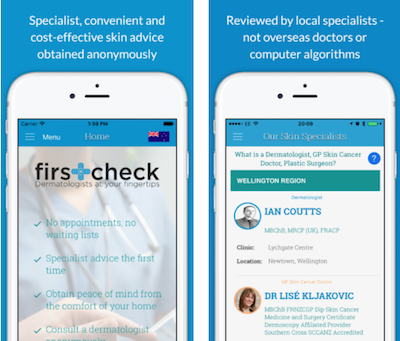
New Zealand-based start-up Firstcheck has launched its free app and low-cost dermatoscope on the Australian market, offering both consumers and clinicians better access to skin specialists for the early detection of skin cancer.
Firstcheck launched its free app in New Zealand last November, allowing consumers to take a photo of the area of concern on their smartphone or tablet and upload it to a secure cloud, where a dermatologist or other skin specialist will examine it and provide advice within 72 hours for $19.95 per consultation.
The company has also developed a low-cost dermatoscope called the SkinScope, which attaches over smartphone cameras and offers 20x magnification. As opposed to some other app-based systems, Firstcheck uses actual health practitioners to examine the images rather than a computer algorithm.

The federal Department of Health is targeting December 1 as the new start date for the HPV-based cervical cancer screening test following the delay in the roll-out of the National Cancer Screening Register, being built by Telstra Health.
Australia's chief medical officer Brendan Murphy has today moved to allay fears that the pathology sector will not be able to cope with current demand for Pap smear tests after May 1, announcing that the department had reached an agreement with pathology providers to continue to provide access to the current test and to supplement it with liquid-based cytology – also known as the thin prep Pap test – which will be covered by a new MBS item number.

Pulse+IT's weekly round-up of international health IT and eHealth news for the week ending February 26:
MD Anderson benches IBM Watson in setback for artificial intelligence in medicine
Forbes ~ Matthew Herper ~ 19/02/2017
It was one of those amazing “we’re living in the future” moments. In an October 2013 press release, IBM declared that MD Anderson, the cancer center that is part of the University of Texas, “is using the IBM Watson cognitive computing system for its mission to eradicate cancer.”
Digital health research in brief
Digital Health News ~ Laura Stevens ~ 24/02/2017
Academics from 25 countries around the globe presented their findings on digital health.
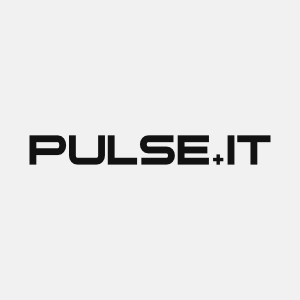
The news this week that ACIVA, the group representing IT vendors servicing the aged care industry, has agreed to merge with the more established group covering medical software vendors, the MSIA, was welcome for a number of reasons, not just because there will now be a unified voice representing the makers and marketers of digital health solutions for all sectors of the healthcare industry.
It also hopefully means that the reality of what 'aged care' actually is and the IT support it needs will be better understood as it gets a larger seat at the eHealth table. While for many the concept of aged care centres around older people living in nursing homes, aged care has long been and will increasingly be delivered in the community, with the numbers of elderly people remaining at home continuing to grow and residential aged care restricted to the very old, the very frail and the very cognitively impaired.

Progress towards choosing an IT solution to underpin New Zealand's National Bowel Screening Program (NBSP) is still in its early stages despite some relatively tight deadlines, with two DHBs due to start screening in July and a full national screening program due to be live by the end of 2019.
Almost $40 million was allocated over four years in the 2016 budget to begin the implementation of the screening program, which will see bowel screening offered to eligible people aged 60 to 74 every two years.

New Zealand Health Minister Jonathan Coleman has singled out the National Telehealth Service and patient portals as examples of progress made in two of the five elements of the much-vaunted NZ Health Strategy, despite the roll-out of portals lagging far behind targets.
Addressing the NZ Health Symposium in Wellington this week, Dr Coleman also said the move towards a single electronic health record will empower patients to take a more active role in their care.

Significant delays in completing the build of the National Cancer Screening Register (NCSR) will now delay the introduction of the new human papillomavirus (HPV) test for cervical cancer and the accompanying MBS item numbers, with state and territory departments reverting to existing Pap test registers for cervical screening.
While existing processes will continue until the register is complete, pathology groups have previously warned that there will be a shortage of laboratory scientists after May, the sector having restructured its workforce to reduce the number of qualified cytologists in advance of the new HPV test, which requires five-yearly rather than two-yearly screens.

The Aged Care IT Vendors Association (ACIVA) has agreed to merge with the broader Medical Software Industry Association (MSIA) to provide a united voice for the health and aged care IT industry in Australia.
ACIVA was first set up in 2009 with the view that there should be a separate voice for the residential and community aged care sectors from other health and IT organisations, but the larger resources and wider network provided by the MSIA have enticed the smaller group to join forces.

Orion Health is planning to release two product updates to its Rhapsody integration later this year, releasing a new Intelligent Mapper function to assist with EMR upgrades and migrations as well as a new 'pluggable' database architecture for Rhapsody version 7.
The Auckland-based company, which also has operations in Australia, Europe and a large operation in Arizona to serve its North American clientele, is currently migrating its Amadeus precision medicine platform to the Amazon Web Services (AWS) cloud. It plans to use the new AWS regions in the UK and Canada to launch Amadeus there, in addition to existing markets such as the US, Australia and New Zealand.

Victoria's Peter MacCallum Cancer Centre has issued a tender for a new, integrated radiotherapy treatment planning system (TPS) to replace the hybrid mix of three non-integrated systems and eight different databases it currently uses to store patient treatment data.
The new system will need to integrate with the Mosaiq radiotherapy information system from Elekta used by Peter Mac in its new home at the Victorian Comprehensive Cancer Centre (VCCC) at Parkville and the four hospital campuses to which it provides radiation therapy services: Bendigo, Box Hill, Moorabbin and Sunshine.
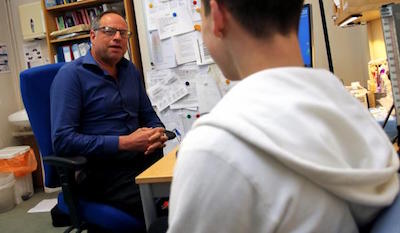
Healthshare has signed up Australia's largest health insurer to its digital health platform, allowing GPs to search within their clinical software for specialists who participate in Medibank’s GapCover arrangements.
Healthshare, best known to GPs for its patient information factsheets, first launched the technology with HCF last December. It allows GPs to check whether a specialist charges a gap fee or not and then use Healthshare's referrals platform to automatically populate a referral.
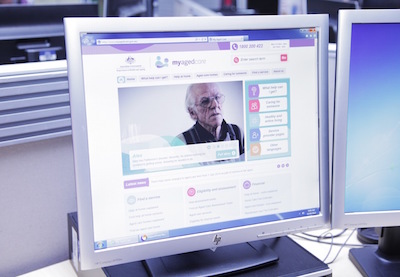
The My Aged Care system will be offline over the coming weekend in a scheduled outage to allow for the introduction of the federal government's Increasing Choice in Home Care (ICHC) reforms.
The ICHC changes will see home care packages become portable and allocated directly to consumers rather than care providers in a continuation of the consumer-directed care (CDC) reforms enacted under the previous government's Living Longer Living Better legislation.

A team from the University of Tasmania is developing an Australian-first wound management system that will capture data on wounds in a range of settings, allow full analysis of that data and potentially offer clinical decision support as part of an effort to tackle the huge cost and deleterious effects of chronic wounds on the community.
The team, led by UTAS School of Medicine, Division of Pharmacy senior research fellow Ivan Bindoff, has been awarded a project valued at around $1.5 million by the Wound Management Innovation Cooperative Research Centre (CRC) to develop a wound management database, which will include as a first step a mobile-enabled web app to encourage healthcare professionals to do more wound assessments and do them electronically.
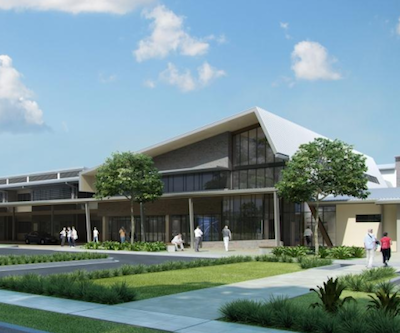
Standards Australia is on track to release what is thought to be the world's first handbook for digital hospitals, comprising a set of principles and recommendations about what a digital hospital is and how to get there for both new and exisiting facilities.
First proposed by the Victorian Department of Health and Human Services, which awarded Standards Australia $100,000 to develop the handbook in May 2015, the initiative was officially launched in November 2015 under the auspices of the Australian Health Ministers' Advisory Council (AHMAC) and the National Health CIO Forum (NHCIOF).
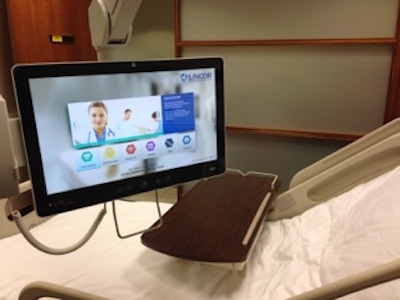
Patient education specialist Healthily has signed an agreement with Hills Health Solutions to offer Healthily's evidence-based health content through Hills' ranges of MATV and IPTV technology, including the interactive Lincor system currently being installed at the new Royal Adelaide Hospital.
Healthily, formerly known as Real Time Health, is also working on a pilot to offer chronic disease-specific education through general practices as part of the Integrated Care Demonstrator projects being run in Western Sydney, and to deliver content bundles for outpatients in association with the NSW Central Coast Local Health District (LHD).
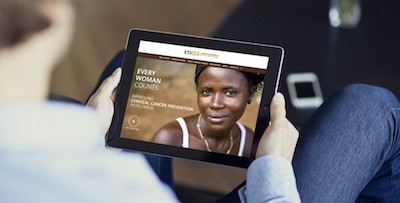
Pulse+IT's weekly round-up of international health IT and eHealth news for the week ending February 19:
SAP unveils cancer screening app in Kenya
eHealthNews South Africa ~ Sikhumbuzo Hlabangane ~ 15/02/2017
SAP’s Design and Co-Innovation Center together with the Heidelberg University Hospital have developed a digitised cervical cancer screening test.
Physitrack, drchrono integrate digital physical therapy with mobile EHR in Apple-orchestrated partnership
MobiHealthNews ~ Heather Mack ~ 16/02/2017
The digital physical therapy, telehealth and patient engagement platform from UK-based Physitrack is getting a boost in users thanks to a new partnership with mobile EHR company drchrono.

Melbourne's Austin Hospital was forced to turn to its paper-based contingency plan yesterday when its electronic medical record (EMR) crashed temporarily.
It's not clear how long the system was down but Austin Health said it did affect the emergency department. Clinicians were able to view the record but not enter data or orders, an Austin Health spokesperson said.

It was only last week that we were complaining there had been a little too much consultation and not enough action and what do you know: Elvis leaves the building and a mobile app – along with news of the next release of the My Health Record – suddenly appear.
IT consulting firm Chamonix, which has done some very useful work helping the states and territories hook their hospitals up to the MyHR through its HIPS middleware and played an important part in the Northern Territory's migration of its My eHealth Record over to the national system, has developed not just a HIPS app for hospital clinicians but a Healthi app aimed at consumers.

The Australian College of Rural and Remote Medicine (ACRRM) has released an update to its Clinical Guidelines for Mobile Devices tool, which provides rural doctors with clinical decision support on their handheld devices.
The technology uses the document and ebook reader app iSilo to provide doctors and medical students with access best practice information at any time and any place, even without an internet connection.

The number of shared health summaries uploaded to the My Health Record has almost doubled in the last four months to a total of 585,433, with a combination of new practice incentive requirements for general practices, the recently completed opt-out trials in two primary health networks and organic growth the main drivers.
Figures provided by the Department of Health show that since shared health summary (SHS) uploads became a requirement of the eHealth Practice Incentive Payment (ePIP) beginning May 1, 2016, a total of 481,551 summaries have been uploaded.
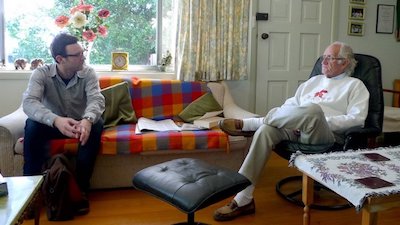
As the elderly population grows in size – it’s expected to double by 2050 – there’s a huge focus on creating products and services to help people stay healthy and live in their homes longer.
Technology companies and health insurers are racing to create products that meet these needs. There are smart home sensors to keep people living independently, telehealth services for video chat with care givers, and an endless amount of connected devices that make it easy to record blood pressure, weight or just about anything.
The Australian government is focusing its efforts here too. The Health Care Homes program aims to give people living with chronic diseases one central place in their community to get help, whilst the broader move to consumer directed care models mean people will have more choice over the products and services they want to use.

Consumers can now access and view their My Health Record (MyHR) on mobile devices with the soft launch of the Healthi app, the first authorised consumer app to link to the national system since the My Child's eHealth Record app was released back in 2013.
Developed by Adelaide-based IT consulting firm Chamonix, which built the HIPS technology that is used by most states and territories to link hospitals to the MyHR, Healthi accesses the record through a seamless link to MyGov and retrieves and presents a summary of information and documents on iPads, iPhones and Android devices.
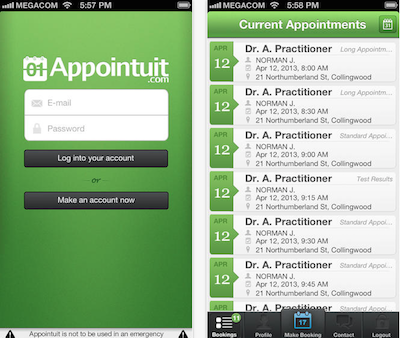
Update: ASX-listed health technology vendor Jayex has parted ways with the founders of its online appointments booking division Appointuit, following a rocky relationship since its acquisition in September 2015 and amid a plummeting share price.
Appointuit co-founders Gordon and Rosemary Cooper have resigned as directors of Appointuit and have parted ways with Jayex, with lead developer Shaun Walker moving over to Sonic Healthcare's Sonic Clinical Services last November.

Epworth Healthcare will roll out Telstra Health's Patient Flow Manager technology at its 777-bed Epworth Richmond hospital, providing staff with a near real-time view of patient flow information.
Patient Flow Manager is part of the health analytics product suite developed by Melbourne firm Health IQ, which was bought by Telstra Health in 2015. It also includes a data analysis platform called Health Central, used by the Tasmanian Department of Health and Human Services, and an outpatients check-in solution called Queue Manager, used by Austin Health among others.

Telstra Health has appointed former NSW Health Director-General Mary Foley as its new managing director, taking over from inaugural MD Shane Solomon, who retires this month.
Dr Foley, who has an honorary doctorate from Western Sydney University and holds an adjunct professorship there, was NSW D-G – later renamed secretary – for five years. She began her career as a public servant before moving into the business sector, working for Mayne Nickless' diagnostics division as general manager.

A comprehensive view of medications information, an enhanced search capability for pathology reports and moves to upload diagnostic imaging reports from jurisdictions other than the Northern Territory are some of the promised new features of release 8 of the My Health Record (MyHR), which the Australian Digital Health Agency (ADHA) is hoping to release this June.
The agency is also working on a mobile enablement program that is developing FHIR APIs to allow information to be pulled down from the MyHR into third-party applications, with the harder work of pushing data up to the system still a work in progress.

Medications adherence platform MedAdvisor has rolled out a new application to its pharmacy customers that will allow it to take control of all of its own transactions and decouple from the Pharmacy Guild's GuildCare platform.
MedAdvisor has used GuildCare – a software solution developed by the Guild's GuildLink subsidiary to deliver various professional services – since its launch in 2013 as the dispensing software integration piece in its platform.

Nelson Marlborough District Health Board will go live with the Health Connect South clinical information portal on Monday, joining the four other South Island DHBs in providing clinicians with access to the same shared electronic patient record for hospital care for the entire South Island population.
Based on Orion Health's Consult technology and underpinned by Orion's Rhapsody integration engine, Health Connect South (HCS) is able to pull information from disparate sources, allows users to update or add information, and presents it in a single patient view. Information includes test results, allergies, x-rays, medications and previous hospital admissions.

New Zealand's troubled National Infrastructure Platform (NIP) is currently in a 'reset' phase, with District Health Boards able to choose infrastructure-as-a-service suppliers other than IBM following the latter's failure to roll out a working system on time.
According to the NZ Treasury's interim major projects performance report (MPPR), completed in November and released last month, the status of the project has improved from red/amber to amber and from a rest phase to a reset phase, but DHBs will now be allowed to choose other suppliers from a vendor panel as well as IBM's offering.
Other major projects that the report looks at include the single electronic health record (EHR) and the northern DHBs' Northern EHR (NEHR), which are both still at a pre-investment stage but are due to have some decisions made about them by the middle of the year.

Pulse+IT's weekly round-up of international health IT and eHealth news for the week ending February 12:
DoD quietly rolls out EHR pilot MHS Genesis
Healthcare IT News ~ Jessica Davis ~ 09/02/2017
This is just the first phase of the DoD's massive EHR revamp, which has been in the works for the past four years. Cerner and Leidos won a $4.3 billion contract in July 2015 to help modernize and consolidate the military EHR.
21 percent of Americans have used virtual healthcare, 78 percent are interested
MobiHealthNews ~ Jonah Comstock ~ 09/02/2017
The gulf between how many Americans say, in a survey, that they would like to use digital health services and how many actually have is still quite large, according to a new survey from Accenture.

The Australian Digital Health Agency (ADHA) was back in the news this last fortnight as the large round of consultations it has been doing – or what we like to call Tim Kelsey's magical mystery tour – comes to an end and work on a new national eHealth strategy starts in earnest.
There has been a flurry of activity, with tenders issued for secure messaging proof of concept trials and pharmacy software vendors incentivised to hook up to the My Health Record. Just this week the members of some of the agency's advisory committees were revealed, some of them extremely worthy. And on Friday, we found out a few details about the next release of the MyHR and what spiffing new features to expect, the most important from a clinical perspective being a unified view of medications and better searchability of pathology and diagnostic imaging reports.
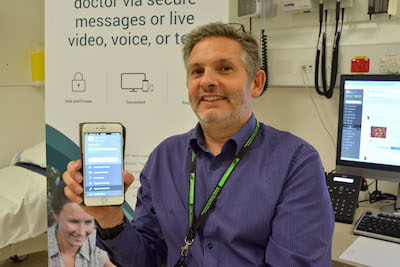
Waikato District Health Board is trialling the use of incentives such as mobile phones and monthly top-ups, along with the DHB's SmartHealth system, to encourage local kids with rheumatic fever to persist with their long-term antibiotic regimen.
Waikato DHB has partnered with telecommunications firm Spark on the trial, in which youngsters are given Samsung Galaxy Smartphones and monthly top-ups courtesy of prepay network Activata. The participants receive the top-up each time they present for their monthly injections, and they are sent reminders through the SmartHealth platform.

Community pharmacy software vendors that have not yet added My Health Record (MyHR) functionality to their dispensing software are being offered funding of between $130,000 and $250,000 to upgrade their products by the Australian Digital Health Agency (ADHA).
Community pharmacy software market leaders Fred IT and Simple Retail, which markets the Aquarius system, have been conformant with the requirements of the MyHR for some years having taken part in the National E-Health Transition Authority's (NEHTA) community pharmacy vendor panel.

eHealth Queensland has released details of tickets, sponsorship and speaking opportunities for the second eHealth Queensland Expo, which is being held on May 17 in Brisbane.
Similar to the well-attended events run by eHealth NSW and NSW HealthShare, the Queensland version kicked off last year and sold out of its 1200 tickets. eHealth Queensland expects 1800 this year.

Adelaide's St Andrew's Hospital is rolling out a mobile patient monitoring system developed by local firm Personify Care that allows nurses, specialist practices and hospitals to detect when a recently discharged surgical patient is at risk of a complication and intervene before their condition escalates.
Personify Care has undergone extensive evaluation through pilot studies since 2015 at surgical practices in Adelaide and at St Andrew’s, which has since announced a hospital-wide roll-out of the platform in collaboration with health insurer Bupa for patients across all surgical procedures.
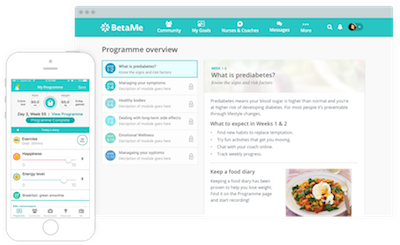
Researchers led by Diana Sarfati from the University of Otago, Wellington (UOW) have won a $1.6 million grant from the Health Research Council of New Zealand to conduct a three-year study into a digital platform for the prevention and self-management of pre-diabetes and diabetes.
Designed by Wellington-headquartered Melon Health, the program achieved excellent results in the BetaMe trial piloted by the Pinnacle Midlands Health Network, with 70 per cent of pre-diabetics recording normal blood glucose levels after four months of being on the program.

West Moreton Hospital and Health Service (HHS) has issued a tender on behalf of Queensland's prison health service for a primary care practice management system to be used by Queensland Health staff working in various correctional and youth detention centres around the state.
West Moreton HHS has handled the prison health service medical record archive since 2012 and in 2015 was asked to implement a contemporary health information management process to address a number of issues that arose from a 2013 coroner's inquest into a death in custody.

Irish health technology and services company Clanwillian Group has made an entrance into the local market, buying low-profile NSW Central Coast-based Medical Business Systems, which specialises in billing and practice management software for anaesthetists.
Clanwilliam, which is part of the huge, US-based Eli Global private equity firm that specialises in long-term buy-and-hold investments, is understood to have been interested in buying GP desktop software firm MedicalDirector when it was up for sale last year. MedicalDirector was eventually bought by Asia-Pacific private equity firm Affinity for a cool $155 million.

Financial management software specialist Surgical Partners has formalised a relationship with Westpac, signing an agreement with the banking giant to accelerate the adoption of its medical billings reconciliation platform among Westpac's healthcare industry customers.
Surgical Partners won a $40,000 prize as part of Westpac's Innovation Challenge in July last year and planned to use the money to increase staff and explore new partnerships. The company is active in both Australia and New Zealand.

Medical equipment distributor Device Technologies has bought Sydney-based digital health firm uHealth, planning to integrate uHealth's surgical and implant technologies into the larger company while keeping uHealth's digital health portfolio and brand in both the Australian and New Zealand markets.
Device Technologies is a privately held company founded in 1992 as a distributor of a vast range of medical and surgical equipment and consumables. Products range from endoscopes and ventilators to portable ECG devices and apps, and a cardiovascular software package. It also provides equipment servicing by technicians trained by original manufacturers.

Core Medical Solutions is in discussions with several of its BOSSnet customers looking to implement Allscripts' FollowMyHealth patient portal, an EMR-agnostic health engagement solution that is used by 10 million patients in the US.
The Adelaide company, which was acquired by Allscripts in December, has also launched a new clinical dashboard in its most recent release, providing an electronic patient journey board that is customisable by hospital staff using a drag-and-drop function.

The new $1.8 billion Sunshine Coast University Hospital at Kawana will open late next month, with outpatients clinics beginning on March 21 and inpatients in the week beginning March 27, Queensland Health Minister Cameron Dick has announced.
Originally slated to open last November, the opening was delayed for several months on the recommendation of an independent clinical readiness advisory group following the poorly handled commissioning of Brisbane's Lady Cilento Children's Hospital, which experienced major problems, including mass confusion over medical records and digital systems, in what is widely considered a rush to open in late 2014.

A promised request for information (RFI) for a new Medicare and aged care payments IT system has been delayed slightly as the new Minister for Health, Greg Hunt, comes to grips with the complex portfolio.
The Department of Health (DoH) announced in January that it would release an initial RFI late that month or in early February, to be followed by a full procurement phase later in the year.

Clinical and practice management software firm Best Practice (Bp) will demonstrate the new patient app it is developing, which aims to provide safe, secure two-way communication between patient and practice, at its annual summit on the Gold Coast in April.
Now in its fifth year, the newly renamed Bp Premier Summit will also feature sessions on pathology requesting and the use of decision support tools, chronic disease management, financials and reporting, a special session on preventing fraud and a session on eHealth featuring a representative from the Australian Digital Health Agency (ADHA).

Melbourne-headquartered health solutions firm UHG has won a contract with the WA Department of Transport (DoT) to automate medical assessments for drivers with medical conditions, allowing GPs to use pre-populated forms that are sent securely and electronically from within their practice software.
UHG won a similar contract with South Australia last year in association with Telstra Health, using its medEbridge eForms technology and Telstra's secure cloud to submit work capacity certificates to ReturnToWorkSA.

Metro South Hospital and Health Service CEO and one-time Queensland Health CIO Richard Ashby has been appointed CEO of eHealth Queensland, with interim CEO Mal Thatcher now “considering his options” for the future.
Dr Ashby is an emergency medicine specialist and has extensive clinical and hospital administration experience, in addition to a long-held interest in health ICT.

Extra functionality including clinical device integration, the delivery of digital records for maternity and community health and wireless upgrades were some of the reasons why the 'digital hospital' release of the integrated electronic medical record (ieMR) ran over budget at Princess Alexandra Hospital (PAH) and Cairns Hospital, Queensland Health says.
A report by Queensland's Auditor-General released last week into the financial performance of Queensland's 16 Hospital and Health Services (HHS) found that most were performing well, but that the budget for PAH's digital hospital roll-out had overrun by $12m and Cairns by $15m.

Pulse+IT's weekly round-up of international health IT and eHealth news for the week ending February 5:
Georgia Tech demonstrates VA Digital Health Platform in proof-of-concept
Health Data Management ~ Greg Slabodkin ~ 02/02/2017
The Georgia Institute of Technology has successfully demonstrated a proof-of-concept for the Department of Veterans Affairs’ new Digital Health Platform (DHP), designed to integrate veteran data from VA, military and commercial electronic health records.
Cerner president Zane Burke reveals open approach to interoperability
Healthcare IT News ~ Bernie Monegain ~ 02/02/2017
The health IT giant is focusing its $700 million R&D budget on EMR usability, interoperability, revenue cycle management, population health.

It has been a somewhat rocky road for Queensland Health and its eHealth ventures over the last few years and it seems little has changed, with a new face stepping up to front eHealth Queensland just as the state's Auditor-General reveals a bit of a blow-out in the budgets for a couple of high-profile eHealth roll-outs.
Just as Pulse+IT reports that the digital hospital version of the Cerner electronic medical record has cost a little more than expected at Brisbane's Metro South Hospital and Health Service's Princess Alexandra Hospital, we hear that Metro South's CEO and “digital hospital evangelist” Richard Ashby has secured the CEO/CIO gig at eHealth Queensland.

The 'digital hospital' release of Queensland's integrated electronic Medical Record (ieMR) has blown the budget at the two hospitals it has been rolled out at, with Princess Alexandra Hospital and Cairns Hospital recording overruns of $12 million and $15 million respectively, almost double the projected cost for each.
The 850-bed PAH went live with the digital stack in November 2015 and 530-bed Cairns Hospital followed in February 2016, with the implementations complicated by the necessity to integrate Queensland's aged HBCIS patient administration system and an old version of the Auslab pathology system.

Better integration of the primary and acute care sectors through the digitisation of health information is one of four priorities that the Australian Digital Health Agency (ADHA) should take on board when developing the next national digital health strategy, the health information management peak body says.
In a submission to ADHA following its invitation to participate in the co-production of the new strategy, the Health Information Management Association Australia (HIMAA) advocates four immediate priorities that ADHA should take into account that will also help ensure the My Health Record delivers real value.

The federal Department of Health has issued a request for tender on behalf of the Independent Hospital Pricing Authority (IHPA) for a mobile app to improve clinical documentation and coding in patient medical records.
The tender says the IHPA is looking for an app that clinicians can use in their day-to-day work and includes content that applies Australian coding standards and prompts clinicians to use accurate medical terminology when describing symptoms, diagnostic testing, results and treatment.

Consumer participation and the nurse’s role in the digital future are the themes of the 2017 Nursing Informatics Australia (NIA) conference, being held in advance of the Health Informatics Conference (HIC) in Brisbane in August.
NIA has opened a call for submissions for the event, Australia’s only dedicated nursing informatics conference.

The Pharmacy Guild is weighing up its options on whether to continue with its MedsASSIST program following the recommendation by the Therapeutic Goods Administration (TGA) in late December to up-schedule medications containing codeine from pharmacy medicines to prescription only.
Guild national president George Tambassis said the MedsASSIST system – a web-based system that can track sales of OTC codeine in real time – had been very effective, with 70 per cent of pharmacies using it.

Telstra Health has been awarded a $10 million contract to roll out a new community health information system based on its Communicare solution for the WA Country Health Service's (WACHS) community and primary healthcare centres.
WACHS provides a number of community and primary care services, including GP, child health and aged care, in the seven non-metro regions of the Kimberley, Pilbara, Midwest, Goldfields, Wheatbelt, South West and Great Southern.

Nelson Marlborough District Health Board chief Chris Fleming has been appointed as chief executive of Southern DHB, where he has been interim CEO since September last year.
Southern DHB, which was formed from the merger of Otago and Southland DHBs in 2010, has struggled with a mounting budget deficit in recent years and saw its board sacked by the Health Minister in June 2015. It has since been led by commissioner Kathy Grant.

The merger between Adelaide's Hills Health Solutions and patient engagement vendor Lincor is officially off, with the business relationship between the two to revert to the previous distribution agreement.
US-headquartered Lincor, which was originally founded by former Apple executives in Ireland, and ASX-listed Hills Ltd first announced a plan to merge the health solutions businesses and list on the stock exchange in September last year, with the merged entity managed by Lincor's CEO Chris Cashwell and Hills' chair Jennifer Hill-Ling as a director.

Western Australia has introduced new regulations revamping its medicines and poisons legislation and creating the legal framework for the introduction of real-time prescription monitoring.
WA intends to replace its current Monitoring of Drugs of Dependence System (MODDS) with a modified version of the much delayed Electronic Recording and Reporting of Controlled Drugs (ERRCD) system first developed in 2012.

The Australian Digital Health Agency (ADHA) will officially begin formulating the national digital health strategy after the three-month-long consultation phase closes tomorrow, with a series of proposals to be taken to COAG later in the year and a four-year work plan developed to implement the strategy.
ADHA CEO Tim Kelsey told a public webinar today that the agency will analyse the feedback it has received and meet with the jurisdictions and the Commonwealth, with a series of proposals put to COAG for its approval.

Sydney-based Liberal MP Brad Hazzard has been named as the NSW Minister for Health and Minister for Medical Research following the forced retirement of Jillian Skinner.
Mrs Skinner, who held the shadow health ministry for 14 years before being appointed minister following the Coalition's victory in 2011, chose to retire from politics after learning she would be removed from the health portfolio in new Premier Gladys Berejiklian's cabinet reshuffle.

Pulse+IT's weekly round-up of international health IT and eHealth news for the week ending January 29:
Paving the way for eHealth interoperability: the EURO-CAS project launches
eHealthNews EU ~ Staff writer ~ 26/01/2017
This scheme will help European health systems assess the conformity of eHealth products and solutions with international standards, and will enhance vendors' visibility by offering public recognition of conformity of their products.
Securing personal electronic health records with a patient's heartbeat
Health Data Management ~ Greg Slabodkin ~ 26/01/2017
Biometrics, the analysis of physical features for identification and access control, has typically relied on facial, fingerprint and iris recognition to secure computer systems.

It didn't come as a huge surprise when NSW Health Minister Jillian Skinner announced on Friday that she had decided now was the time to get out, with new Premier Gladys Berejiklian likely to reshuffle her cabinet and much of the gossip on Macquarie St centred on bringing fresh faces onto the front bench following the retirement of Mike Baird.
It wasn't a surprise but it was a shame, as Mrs Skinner has been a pretty good health minister all things considered. Her deep knowledge of the portfolio is legendary – she did spend 14 years as opposition health spokesperson before ascending to the leather throne in 2011 – and she is widely admired for her passion for healthcare and the healthcare system, both public and private.

Trans-Tasman clinical and practice management software vendor Best Practice (Bp) is keeping a close eye on movement in the New Zealand primary care market as it prepares for a NZ version of its flagship Bp Premier product and continues work on its future cloud-based version, nicknamed Titanium.
Bp first entered what was then a tight market of four players offering general practice software in April 2015, when it bought the assets and IP of Hamilton-based vendor Houston Medical, developer of the VIP.net software package predominantly used by specialists and a handful of GPs.

The world of virtual care is the theme of the Australian Telehealth Conference (ATC 2017) being held in Melbourne in April, highlighting how telehealth has moved beyond its pilot stages into mature, permanent models of care.
New Zealand's National Telehealth Service was launched in October 2015 and is now offering a national, 24-hour service combining nurse-led health hotline services, poisons advice, clinical telephone assessment for low acuity emergency calls to St John and Wellington Free Ambulance, and an after-hours teletriage service for 600 general practices.

A number of difficult technical and medico-legal hurdles still need to be overcome but the Royal Australian College of General Practitioners' eHealth expert committee chairman Nathan Pinskier is quietly confident that, if the goodwill remains, the clinical and the medical software communities can achieve the goal of a functioning, interoperable secure messaging system.
Dr Pinskier, who was named as co-chair of an independent secure messaging program board set up by the Australian Digital Health Agency (ADHA) late last year, has been there and done that before as a clinical lead with the now disbanded National E-Health Transition Authority (NEHTA).

Online appointment bookings site 1stAvailable has rebranded as MyHealth1st, following the ASX-listed parent company's decision to rename itself as 1ST Group last December.
The group includes the former 1stAvailable online bookings site along with the assets of DocAppointments and Clinic Connect, which the company bought in 2015, and the government and enterprise booking solutions site GoBookings.

Bay of Plenty GP Emily Gill will head to the US to study the use of technology in rural healthcare after being awarded a Harkness fellowship in healthcare policy and practice by US-based non-profit the Commonwealth Fund.
The prestigious award is typically offered to just one New Zealander and one Australian per year.
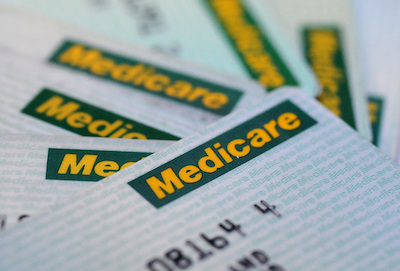
The federal Department of Health will release an initial request for information (RFI) for its planned overhaul of the Medicare payments system in the next fortnight followed by a full procurement phase later in the year, with the aim of demonstrating actual progress in the implementation of the system by early 2019.
DoH officials held two meetings in Sydney and Melbourne earlier this month to brief the market on its plans for a digital payments platform to replace the 200-odd applications and 90 databases underpinning the 30-year-old Medicare system.

About 200 patients have been moved today from the old Bendigo Hospital to the new $630 million facility, with doors to all comers due to open tomorrow.
More than 3000 staff are also making the move to the new hospital, which features 372 inpatient beds, 72 same-day beds, 11 operating theatres, an integrated cancer centre, a new 25-bed maternity unit and an 80-bed mental health unit.

The Australian Digital Health Agency (ADHA) will issue a call for expressions of interest (EOI) next week for technology suppliers and end users who want to collaborate on setting up demonstration sites for secure messaging proof of concept projects.
The EOI will call for proposals from consortia to work on three different use cases: general practice referrals to specialists, allied health messages to general or specialist practices, and hospital discharge summaries to general practices and other providers.

Pulse+IT's weekly round-up of international health IT and eHealth news for the week ending January 22 3:
Global digital exemplars waiting on central cash
Digital Health News ~ Laura Stevens ~ 19/01/2017
Twelve hospital trusts promised extra support to become global digital exemplars are still waiting on millions in central funds they were expecting last year.
Harvard study of almost 800k lives shows MedAware technology reduces medication error
MobiHealthNews ~ Heather Mack ~ 19/01/2017
Researchers at Harvard Medical School have demonstrated a new technology can help reduce a widespread problem that harms some 1.5 million people every year – medication error.

Telstra Health was back in the news this week, with Telstra's group executive for new businesses Cynthia Whelan keen to talk to Pulse+IT about her strategy for the coming year. The former investment banker and Barclays ANZ CEO has taken a real interest in the new division, which when compared to the rest of Telstra is so small that it doesn't yet trouble the balance sheet but is of deep and abiding interest to our readers.
Ms Whelan is set to continue the strategy laid out by inaugural MD Shane Solomon, who while he is retiring from the company is still going to be involved in the roll-out of the National Cancer Screening Register. Despite the dramas of last year, it appears that Telstra Health is on track to deliver the NCSR, and Ms Whelan is keen to go for more large, complex projects of this kind.

The Australian Digital Health Agency (ADHA) has set up a new national medicines safety program to look at how digital technologies can help improve the safety and quality of medicines usage, with a steering group to conduct an 'environmental scan' of the market to identify opportunities to improve coordination, collaboration and investment.
Co-sponsored by former AMA president Steve Hambleton and former rugby league player Steve Renouf, the program will in the short term look at enhancing medicines management use and capability in the My Health Record system.
Dr Hambleton said the program will draw on work already done by the likes of NPS MedicineWise and the Australian Commission on Safety and Quality in Health Care (ACSQHC) but the role of the steering committee and ADHA itself will be as a coordinating body, and the environmental scan of digital activities will take in developments by private software companies as well as public health bodies.

Telstra Health is moving on from the first stage of its long-term growth strategy in which it invested $240 million in buying or partnering with 18 different companies and entering a new integration and delivery phase in the coming year, with plans to release new interoperable products and platforms built upon the foundational technologies it has acquired, including an app-based patient interactive platform that will plug into the My Health Record.
While a search for a long-term replacement for retiring Telstra Health managing director Shane Solomon is underway, Telstra's group executive for new businesses Cynthia Whelan is taking a hands-on role, managing the division's day-to-day operations and looking at integrating the different companies and brands into one Telstra Health whole.

Does your software look like it belongs in the '90s? If it does, you’re not alone. Sure, maybe it still works. It's technically powerful and there are loyal customers, but for years the design has been driven by developers and it shows.
This happens a lot in the health industry. Why? Because health is complex. Software companies are working with limited resources, changing regulations, and a customer base that is highly resistant to change. This means that health software evolves sporadically over the course of many years. One feature after another is added to an already cluttered interface, and all of a sudden your once clean product looks like a mess.

The digital health arm of Queensland Health has announced the appointment of five senior executives after a five-month-long recruitment process, while it continues to look to fill the CEO/CIO role left vacant by the departure of Colin McCririck last year.
Acting chief digital strategy officer Cathy Ford has been confirmed in the role permanently, where she is joined by former Fujitsu staffer Bruce Linaker, who has taken up the job of chief solution delivery officer, and former ACT Health acting CIO Warren Prentice, who has been named chief technology officer.

Former environment and industry minister Greg Hunt has been appointed as Minister for Health and Minister for Sport, with assistant minister Ken Wyatt elevated to a full post as Minister for Aged Care and Minister for Indigenous Health.
The latter remains in the outer ministry with Mr Hunt representing aged care in Cabinet. David Gillespie, a gastroenterologist, will continue to serve in the portfolio as assistant minister for health, with responsibility for rural health.

Victorian GPs have been reassured that they can continue to prescribe Schedule 8 drugs for longer than eight weeks without a written permit as long as they have taken steps to apply for one.
Pulse+IT has been told there is a great deal of disquiet amongst Victorian GPs over the Department of Health and Human Services (DHHS) permit system, which appears to be suffering from a backlog in applications that has in one instance seen a permit arrive after the patient had ceased treatment.

Western Sydney Local Health District (LHD) has launched a new patient experience digital platform at Westmead and Auburn hospitals that can capture patient feedback in real time and allow it to be instantly analysed by staff.
Based on the UK's MES Experience technology that has been brought to Australia and customised by Sydney patient experience and analytics firm Energesse, Western Sydney LHD is today officially launching it as the My Experience Matters survey.

More than 45 per cent of Australian pharmacies are now connected to the MedAdvisor medications adherence platform and the company is now providing patient engagement programs for 18 different medications following a big year for the ASX-listed firm.
MedAdvisor has also seen a big boost in revenue – with $1.32 million in cash receipts for the December quarter, up 77 per cent on the previous quarter – and the Tap-to-Refill script ordering function on its app now processing an average of $2.5 million in script refill value per week.
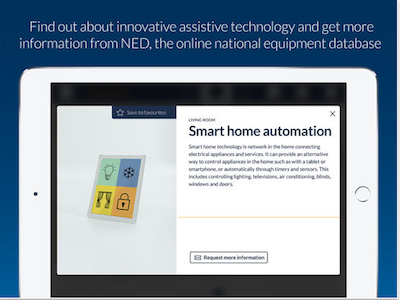
WA's Independent Living Centre has developed a free app for people living with disability to identify assistive equipment and technology options that can help them live more independently.
The Equip Myself app is linked to the national equipment database (NED) developed by Independent Living Centres Australia, which contains impartial information about over 11,000 assistive technology (AT) and equipment options.

Pulse+IT's weekly round-up of international health IT and eHealth news for the week ending January 15:
IBM Watson, FDA align to boost public health with blockchain
Healthcare IT News ~ Bernie Monegain ~ 11/01/2017
IBM Watson Health and the FDA announced on Wednesday that they would work together on an initiative to create a secure, efficient and scalable exchange of health data using blockchain technology.
UCLA Health reduced transfusions by 20% with clinical decision support, all-electronic bar code scanning
Healthcare IT News ~ John Andrews ~ 11/01/2017
Transitioning from a hybrid electronic-paper format to all-electronic bar code scanning has created tremendous efficiencies and greater patient safety for the blood administration process at UCLA Health, according to nursing informaticist Meg Furukawa.

There's nothing like the resignation of a health minister, even temporarily, to get the year in healthcare off to an interesting start so we thank Sussan Ley for her contribution to shaking the cobwebs out of the old year and giving us a cracking start to the new.
Ms Ley's decision to stand aside on Monday was the right one and, considering the outpouring of public disgust during the week at the culture of entitlement that seems rife in the political class, her decision to resign on Friday was probably the correct one too.
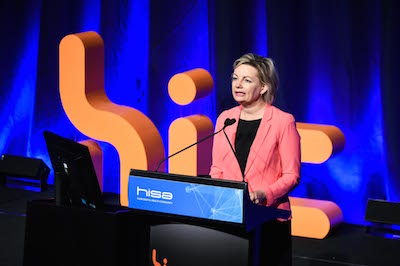
Sussan Ley has resigned as Minister for Health and Aged Care, citing “ongoing intense media speculation” as a distraction from the government's agenda.
Ms Ley, who precipitated an ongoing bout of media and public outrage about politicians' travel expenses and other entitlements when it was revealed she had bought an investment property while on taxpayer-funded official business, said she was confident that she had followed the rules, “not just regarding entitlements but most importantly the ministerial code of conduct”.

Health Informatics New Zealand (HiNZ) has issued a call to members to come up with suggestion for keynote speakers at the annual HiNZ conference, being held in Rotorua in early November.
HiNZ is looking for names and reasons why the nominee would be a headliner, with a shortlist to be considered at the HiNZ board meeting next month.

Nelson Marlborough District Health Board (NMDHB) is gearing up to go live with the Health Connect South clinical information portal next month in what is a major milestone for the South Island, with all five southern region DHBs connecting to the same shared electronic medical record for secondary care.
And when the primary care portal HealthOne is rolled out in Nelson Marlborough by the middle of the year, the South Island will have what is in effect a shared electronic health record for its entire population, in what could prove a model for the New Zealand government's plans for a single, national EHR.
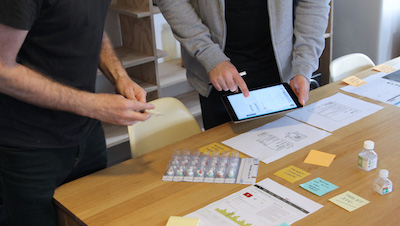
Melbourne-based digital design consultancy Navy Design has turned its attention entirely to healthcare, deciding after five years of working on a range of projects to concentrate solely on user experience design and health.
Navy has also launched an initiative called Design Aid to give underfunded healthcare projects access to good design for free, offering a two-week intensive design sprint for promising projects to help them take their product to the next level.

The Health Informatics Society of Australia (HISA) has issued a call for submissions for the Health Informatics Conference (HIC 2017), being held this year in Brisbane from August 6 to 9.
HISA says the HIC 2017 conference will continue with recent themes of highlighting innovation and the digital transformation of the healthcare sector, including the central role that information and health informatics brings in connecting the system.

Canberra-based GP Christine Colson and her team from RoverTravelScript have released a new online travel medicine app called TripGenie, aimed at helping GPs provide comprehensive advice to patients quickly.
Dr Colson said TripGenie is a clinical tool aimed at the busy GP, who simply lists the countries of travel in the app, which then generates a series of reports all customised for the particular itinerary.

WebRTC-based telehealth provider Coviu has formed a partnership with regional allied health group Health Team Australia (HTA) to offer the Coviu platform to patients living in rural and remote areas.
The agreement is expected to connect up to 20,000 patients using HTA's network of allied health professionals such as exercise physiologists, dietitians, psychologists, mental health nurses and occupational therapists.

Shared services provider healthAlliance NZ has issued a request for expressions of interest (EOI) for a telehealth consultation solution on behalf of the four northern region DHBs.
Auckland, Waitemata, Counties Manukau and Northland DHBs are looking for a regional telehealth solution to enable remote consultations to be performed by clinicians and support staff.

ASX-listed medications adherence technology developer MedAdvisor is set to acquire online booking and transaction service OzDocsOnline, following the collapse of a deal between the pioneering GP-focused firm and online appointments specialist 1stAvailable last year.
MedAdvisor, which is expanding into the GP market through its recently launched GP Link script renewal product and the GP Connect service it bought as part of its $5.5 million acquisition of competitor Healthnotes last October, plans to integrate OzDocsOnline with GP Link and GP Connect later in the year.
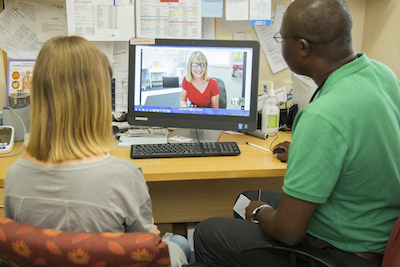
More Australians are using broadband internet for their health and wellbeing needs but the vast majority of activity is limited to Googling symptoms and conditions rather than actually accessing healthcare, a new NBN survey shows.
Data released last week from the NBN Broadband Index, a survey of more than 10,000 Australians conducted on behalf of the NBN by Evolve Research, shows that online health and wellbeing activity is increasing, with the majority of consumers confirming they’re doing at least one more online activity now compared to two years ago.

The federal government is holding two market briefings this week on the IT system it plans to introduce to replace those used for Medicare, PBS, aged care and veterans' payments.
The government says it hopes to issue a request for proposal (RFP) early this year on the new solution, which it says will be an “innovative, cost effective, end-to-end digital health and aged care payments” system that will be based on existing commercial technology.

Eminent eHealth expert John Halamka has joined Orion Health's board as an independent director.
Dr Halamka is currently professor of international healthcare innovation at Harvard Medical School and CIO of Beth Israel Deaconess Medical Center (BIDMC) in Boston, where he is also a practising emergency physician and is responsible for all clinical, financial, administrative and academic IT serving thousands of clinicians and millions of patients.

Health Minister Sussan Ley has stood aside from her position on the front bench following an escalating scandal over her use of taxpayer funds to pay for flights and accommodation to the Gold Coast.
Ms Ley's expenses have come under scrutiny since it was revealed by News Corporation that she had spent $12,000 on a charter flight to attend the Pharmacy Guild's conference in 2015. She also purchased a $795,000 apartment with her partner during an official trip to the region.

In a year of huge transition for eHealth and the healthcare system in general in New Zealand, nothing seemed to capture the attention of readers this year more than news of the national electronic health record. As it's still not certain exactly how the single EHR will be built – or how much it is going to cost – it was no surprise to see that our top story for 2016 had those very elements in the headline, with the mandatory allusion to LOTR of course.
The year in eHealth actually kicked off in the primary care sector with the first nine practices signing up to the Wellington region Health Care Homes program. Developed by Capital & Coast DHB in partnership with Compass Health, Cosine, Well Health and Ora Toa PHOs, the wider Welly region has joined Auckland, Waikato and Canterbury in trying out the model, which promises to make better use of existing technology to better care for those with long-term conditions.

Our top NZ stories mirrored our Aussie ones in being an acronym-filled paradise but there was one initialism in particular that kept cropping up all year, and it had an E, an H and an R in it. Health Care Homes, wrangling over PMS panels and the NES, the digital hospital blueprint initiative and Waikato's virtual DHB were all hits, as was the name of new digital health chief and the red alert over the NIP.
Interestingly, the top story wasn't a breaking news story so much as a bit of an old stager, so while it had an EHR in it, we reckon it was the LOTR reference that did the trick.
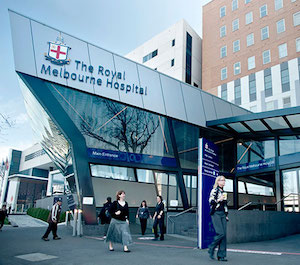
Some old faces from last year's list made the hot top 20 most-read stories on Pulse+IT in 2016, and there were even some lurkers from the year before. Anything with Telstra Health, EPAS or ePIP in the headline was an instant winner, but this year they were joined by Mediscare, Epic and Royal Melbourne Hospital's infamous Qbot worm in the top shelf.
The goings on at the new Australian Digital Health Agency were also of interest as were the new owners of MedicalDirector and the big four who made it onto the NT's shortlist for new clinical systems, but it was a new initiative that turned into another topic of dispute between the government and the general practice community that took out the top spot.
Copyright © 2025 Pulse IT Communications Pty Ltd. No content published on this website can be reproduced by any person for any reason without the prior written permission of the publisher. If your organisation is featured in a Pulse+IT article you can purchase the permission to reproduce the article here.
Website Design by Get Leads AU.